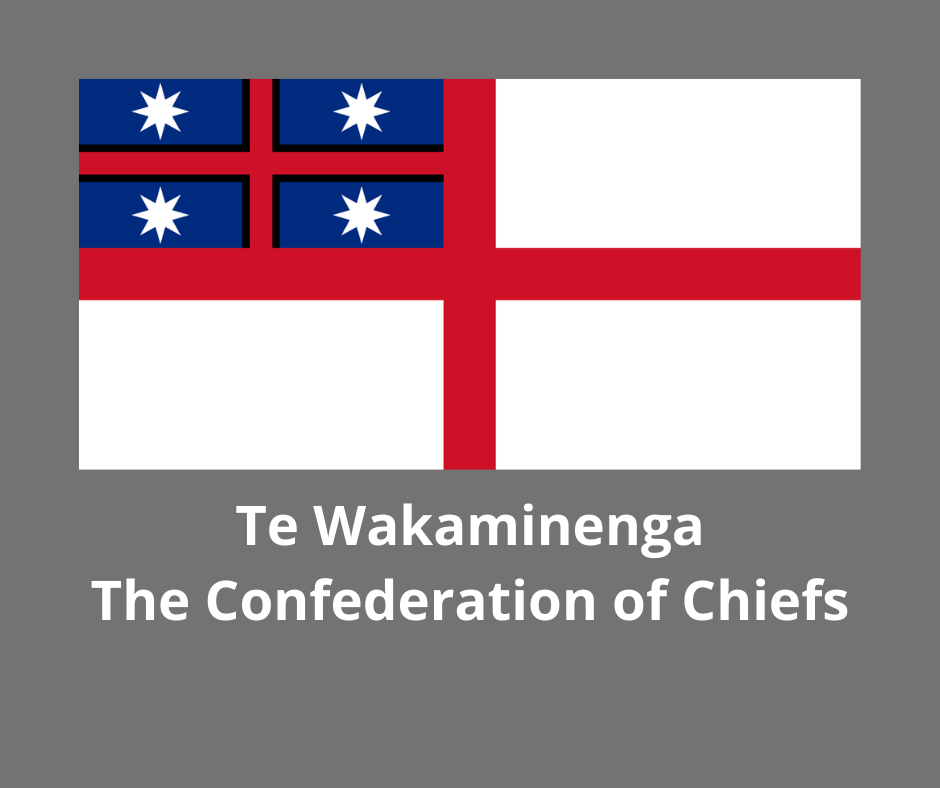Stimulated by the rangatira Te Pahi, northern leaders began meeting from about 1808 in formal assembly to agree on law and policy concerning the newcomers. This assembly was called Te Wakaminenga o Ngā Hapū o Nu Tīreni (the General Assembly of the Tribal Nations). The name of the Assembly’s general secretary was Waikato. He and the renowned Ngāpuhi leader Hongi Hika went to meet King George IV of Britain in 1820, under the auspices of Te Wakaminenga.
In the years leading up the Declaration and the Treaty, the meetings of Te Wakaminenga were attended and supported by many key leaders from around Te Ika a Māui (North Island), and gatherings continued well after the Treaty was signed. There were also many South Island connections with the assembly through tribal associations that reached back for hundreds of years.
The flag chosen by the northern leaders in 1834 was known as the Te Wakaminenga flag. Te Wakaminenga, known to the British as the Confederation of Chiefs, was the author of the Declaration of Independence and is prominently named in the Treaty.
Te Wakaminenga operated as a true confederation, where the member hapū retained their authority and independence.
While Te Wakaminenga (the Confederation) had an important role in dealing with matters that were of common concern and particularly those that involved dealing with the growing number of foreigners, it was not intended that it would displace the authority held by the hapū and their rangatira.
Sources:
Treaty of Waitangi Questions & Answers, Network Waitangi 2018
Ngapuhi Speaks, Te Kawariki & Network Waitangi Whangarei 2012
Evidence from WAI27, Waitangi Tribunal

